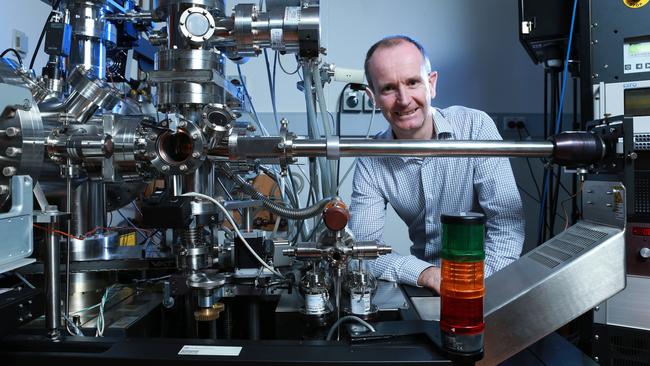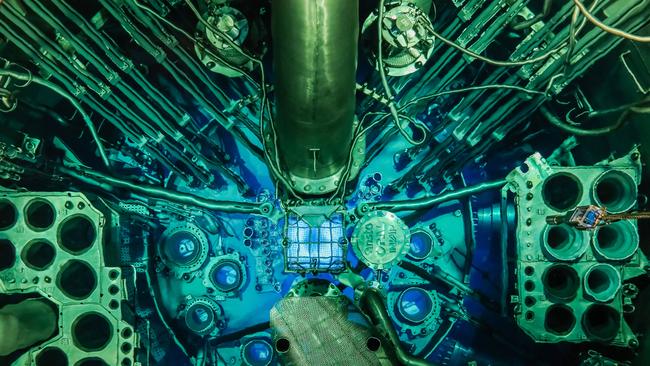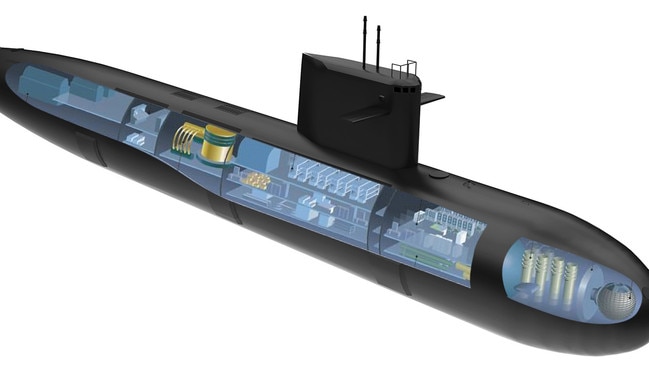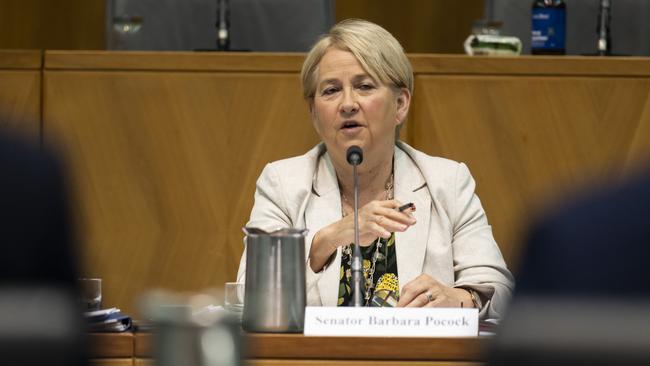Aussie experts say nuclear myths could cost us the deal of a lifetime
Australia is on the brink of a massive opportunity but the country’s stuck with outdated ideas, experts warn.
SA News
Don't miss out on the headlines from SA News. Followed categories will be added to My News.
Misconceptions about the safety of nuclear-powered submarines must be busted ahead of the ambitious project that could make Australia a global leader in the highly complex industry, the nation’s nuclear organisation has declared.
Wary Australians, particularly those on the far left of politics who are concerned AUKUS will somehow lead to another Chernobyl-style disaster, have been urged to respect the country’s long history in nuclear stewardship that predates even the International Atomic Energy Agency (IAEA) – the global nuclear watchdog.
The Australian Nuclear Science and Technology Organisation (ANSTO) is set to play a central role in developing and operating the country’s future nuclear-powered submarine fleet, building on 70 years of experience.
It’s often said Australia does not possess the nuclear expertise required to construct the complex boats – but ANSTO’s Group Executive of Nuclear Safety, Security and Stewardship, Miles Apperley, is out to change people’s minds.
“We’ve been operating nuclear reactors in Australia since 1958 continuously … and our nuclear experience has demonstrated Australia’s ability to comply with safeguard requirements,” Dr Apperley told The Advertiser in an exclusive interview to mark ANSTO’s 70th anniversary.

Australia first established a nuclear science industry in 1953 with the Australian Atomic Energy Commission, which ANSTO replaced in 1987.
He said ASNTO’s “track record of nuclear stewardship” is being used as a significant leveraging tool on the biggest stages in international diplomacy.
“It’s being leveraged significantly now to show that Australia can be trusted, and when we stand up beside the UK and US partners at the IAEA and say we are going to commit to upholding the highest level of non-proliferation and safeguards, there is a lot of belief,” Dr Apperley said.
“With decades of stewardship and safe handling of material, we have generated an enormous benefit for the nation and built a huge international reputation in many areas – these are solid credentials from which Australia can lay this enterprise in the future.”
At its facility in Lucas Heights, NSW, ANSTO operates a 20-megawatt reactor powered with low enriched uranium fuel to produce medical radioisotopes, from which almost every Australian will benefit at some point in their life.

The reactor is used to produce many radioisotopes including Phosphorus-31 for the treatment of excess red blood cells and Technetium-99m used for medical imaging.
Less widely known is that ANSTO’s reactor also produces 50 per cent of the world’s irradiated silicon, used in a range of advanced systems such as power grid infrastructure, wind turbine systems and high-speed trains.
On top of its commercial duties, the 1300-strong ANSTO is a leader in cutting-edge research programs, and each year opens its doors to 5000 researchers from around the world, visiting Lucas Heights and the Australian Synchrotron in Melbourne.
ANSTO is also responsible for providing trusted advice to the federal government on nuclear technology, including the nuclear-powered submarines to be built under the AUKUS pact with Britain and the US.
Dr Apperley is not oblivious to the considerable challenges with developing a nuclear skilled workforce capable of operating submarines fuelled with highly enriched uranium – an objective he labelled “the biggest pole in the tent”.

“The nuclear piece is really new and it will be complex and it will be hard – but the rest of the submarine is conventional, in the sense that it is a war-fighting machine and Australia has significant experience in this,” he said.
“The new bit is it’s going to have a propulsion system, the energy for which comes from a nuclear reactor, and the submarine taskforce will probably be the first group to say ‘yep, standing up suitably qualified and experienced nuclear personnel is job number one.”
But Dr Apperley said Australia already had a headstart that should not be underestimated.
“Our nuclear baseline is very solid. ANSTO and Australia operates a very complex and sophisticated nuclear operation,” he said.
“We know that when the US and UK visited ANSTO in early 2022, it provided significant confidence that Australia had a foundation – it had a baseline on which it could build.”
Despite a pledge to arm the submarines with conventional weapons, the AUKUS pact has attracted considerable scrutiny from antinuclear groups concerned about domestic safety and Australia becoming a target for global adversaries.

In August, SA Greens senator Barbara Pocock attended a rally in Adelaide that made baseless claims the AUKUS submarine deal would lead to another Hiroshima-style atomic bombing that killed 140,000 people in 1945.
Defence SA boss Richard Price said growing international instability meant acquiring nuclear-powered submarines was crucial.
“People don’t understand nuclear – they just head the one word ‘nuclear’ and immediately jump to the conclusion that we’re talking about large scale nuclear energy plants such as Chernobyl (which exploded in 1986),” Mr Price said.
“Technology has moved a long way in the nuclear energy industry, but what we are talking about is a much smaller reacter on a submarine … so it’s no where near the same issue as you’re dealing with in a power station.”
Mr Price said nuclear-powered submarines were the “ultimate stealthy platform” that could travel thousands of kilometres away in a short period of time and stay submerged indefinitely.
“It puts incredible uncertainty in other people’s mind as to where they are, and if they have to go hunting for submarines, it ties up a tremendous amount of resources,” he said.
“They can stay operational for so much longer, they also travel much faster and they don’t have to resurface to recharge batteries, so they are so much harder to find than a conventional submarine over a long period of time.”




